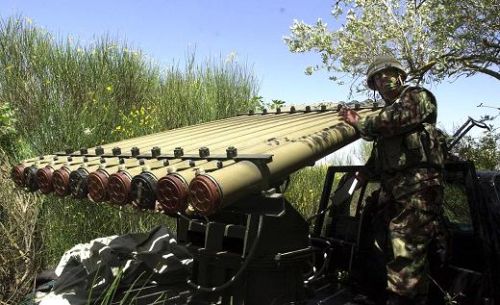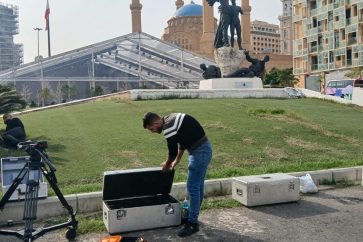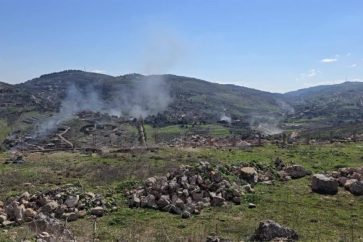Since the emergence of the resistance, the ‘War of Equations’ between the Islamic resistance and the Israeli entity has been ongoing. This ‘war of equations’ came to light in 1996, the moment the so-called “April Understanding” was endorsed, after the 16-day aggression known by the Israeli enemy as “Operation Grapes of Wrath”.
Although each equation set by Hezbollah had its circumstances, they all charted the trajectory of possibilities, in terms of the resistance’s goals and performance at all levels. Today, after a long journey of capabilities buildup, Hezbollah managed to impose its red lines on the Israeli enemy.
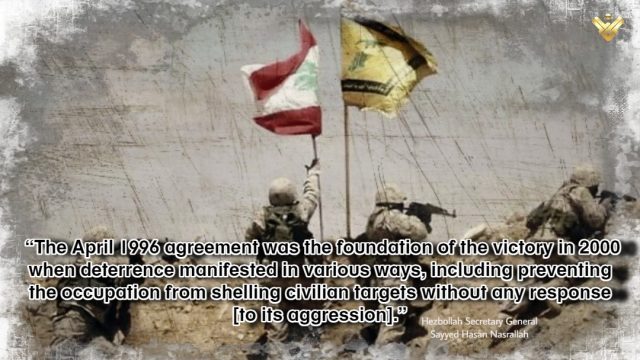
These equations include the ‘Prisoners’ Equation’ in 2004 and the ‘Great Deterrence Equation’, which was a result of the ‘Divine Victory’ following the 33-day war in July 2006. Another equation can be added to the list.
In 2019, Hezbollah declared that any attack on its facilities or individuals in Lebanon or Syria will be met with a similar response. The ‘war of Equations’ hasn’t ended here, as it also includes the ‘Air Deterrence Equation’, which prevented the Israeli drones from penetrating Lebanese airspace (also in 2019).
Lastly, the ‘Karish Equation’, which served as a cornerstone for the launch of the maritime deal in October 2022, has safeguarded Lebanon’s right to its oil and gas resources.
The April 26 understanding’s outcomes
At six o’clock in the afternoon of April 26, 1996, Lebanon was able to impose the first ceasefire understanding on the temporary entity known as the April Understanding, thanks to the efforts of its resistance, the steadfastness of its people, and the solidarity of its state, as well as the support of Syria and Iran, and the French state. This was following the 16-day “Grapes of Wrath” offensive, during which Zionist army carried out over 1,100 air attacks and thorough shelling, resulting in several killings, most notably the Qana and al-Mansouri massacres.
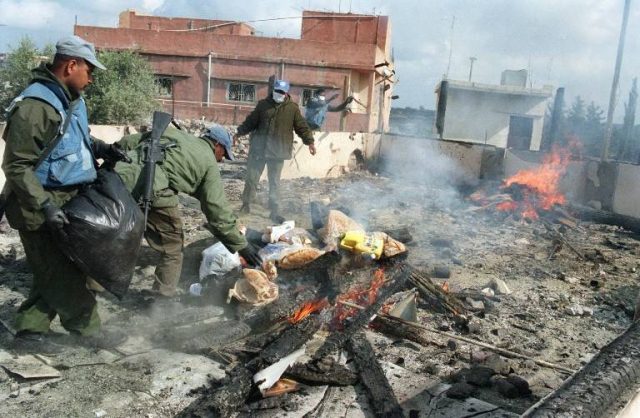
The resistance responded with about 639 missile attacks targeting the settlements in the occupied northern region of Palestine, particularly the Kiryat Shmona settlement.
The resistance’s missile response serves as the foundation for the deterrence equations included in the April Understanding, in which it was agreed to end cross-border attacks on civilian targets and refrain from using civilian villages to launch attacks, provided that confrontations are limited to military targets.
Thereupon, a committee comprised of members from the United States of America, France, Syria, the temporary entity, and Lebanon was formed to oversee the execution of this agreement, and it met regularly to examine any violations.
In addition, the international community was forced to recognize, albeit indirectly, the legitimacy of the resistance and that it is best suited for liberation from occupation, in light of the failure of the Security Council and UN institutions to implement international legitimacy resolutions.
In a nutshell, this understanding has left numerous strategic implications, particularly in terms of resistance.
Source: Al-Manar English Website

